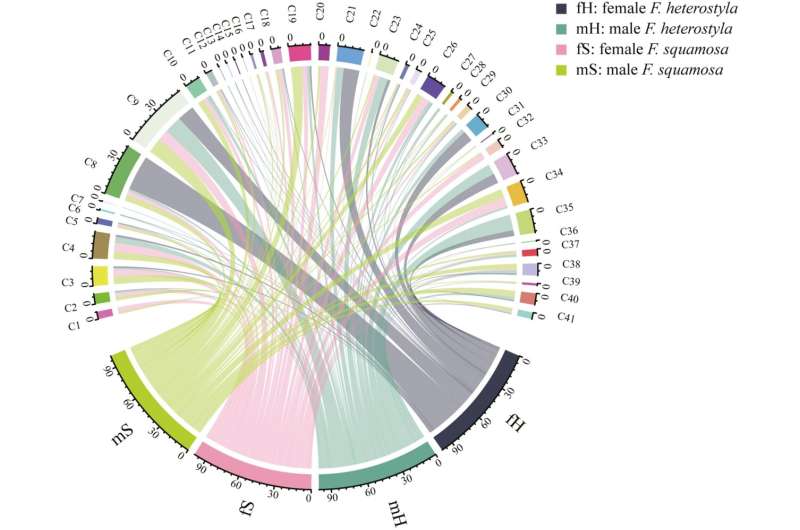This article has been reviewed according to Science X's editorial process and policies. Editors have highlighted the following attributes while ensuring the content's credibility:
fact-checked
peer-reviewed publication
trusted source
proofread
Prezygotic isolation between sympatric dioecious figs may not yet be established

Cospeciation is generally considered a key process driving the diversity of figs and their pollinating wasps. Ficus squamosa and Ficus heterostyla are two closely related dioecious figs. This pair represents a good system for gaining insights into cospeciation dynamics and processes, as well as the potential biological consequences of heterospecific visitation.
A research team from the Xishuangbanna Tropical Botanical Garden (XTBG) of the Chinese Academy of Sciences have investigated both pre- and post-zygotic isolation in a sympatric fig pair consisting of F. heterostyla and F. squamosa, to reveal the final stages of speciation between the two closely related specimens.
The study was published in Evolution Letters on Oct. 7.
The researchers analyzed volatile profiles at the receptive phase, which was crucial for attracting pollinators. They identified volatile compounds for the two fig species and found that most compounds were shared, despite significant interspecific dissimilarity. The lengths of the wasp ovipositors were well within the range required for access to heterospecific ovules.
The team then produced hybrid seeds through manipulative experiments and observed that wasps of F. heterostyla reproduced in F. squamosa figs, while wasps of F. squamosa did not reproduce in F. heterostyla figs. Although the species are morphologically distinguishable and are generally pollinated by distinct wasp species, reproductive isolation is not fully realized.
The researchers recorded weak geographic barriers, minimal volatile dissimilarity, compatible morphology, complementary reproductive phenologies and the production of hybrid seeds and wasp offspring in heterospecific hosts.
"Together with geographic barriers and complementary reproductive phenologies, our findings suggest that prezygotic isolation between F. heterostyla and F. squamosa may not yet be established," said Huang Jianfeng, first author of the study.
The researchers suggest that F. heterostyla and F. squamosa represented an example of incomplete wasp specialization and potentially incomplete reproductive isolation.
More information: Jian-Feng Huang et al, Pollinator sharing and hybridization in a pair of dioecious figs sheds light on the pathways to speciation, Evolution Letters (2023). DOI: 10.1093/evlett/qrad045
Journal information: Evolution Letters
Provided by Chinese Academy of Sciences




















